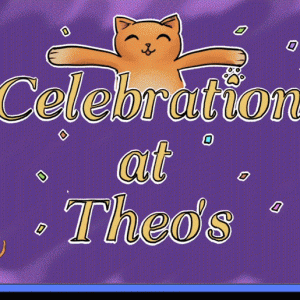In Celebration at Theo’s, the player playing as a cat trying to gather supplies to have a cat party when their humans are away. The player has to sneak around the house with different household items marked as “party” items (e.g. “streamers” are actually blinds). If the player gets caught with an item, they are sent back to their bed and the item is replaced. Depending on how many items the player got by the end of the day, different win states would happen.
What I did
I worked on player movement, which included moving between different rooms and picking up the different objects. I also designed the layout of the house and what all the items were and where they were placed. I also lead the team in the art direction, implemented the static art (not animations), and kept us in scope. All the music and sounds were also made by me. I also made the interactive start screen, end screen, and worked on some of the UI.
What I learned
First off, it’s SO NICE to have an actual artist doing the art, and the larger team of four was great. We all worked smoothly with no problems, and it was nice to not be stressed out on time or be overloaded by a whole bunch of tasks. With the help of an outside instructor volunteering their time for this jam, we learned how easy it was to collaborate on a project through Unity’s collab. I also learned how to manage merge conflicts through the Turtle merge handler, which made things a lot easier when dealing with conflicts. GitHub was really slowing the team down with having to recreate whole scenes, so we switched to Unity collab and our production speed almost doubled.
It was nice to be able to focus on more of the design of the game, and I think taking the extra time in the beginning to fully flesh out what we wanted helped the team set specific tasks that they needed. I learned how to make objects a child of the parent, so I could easily pick up an object and have it follow the character around. I also learned about Unity’s nice feature of being able to have a scene overlayed onto another. This was helpful in determining where the items would be placed while also having another programmer work on them. What I also started to work on while programming is making my code readable and be able to be easily changed. What I mean is, while I was implementing the movement, I also knew another programmer was working on the powerups for the cat, so I left some variables and methods public so the programmer had an easy time implementing the powerups to affect the movement. This made the programming process relatively simple and I like to think it helped speed things along.
